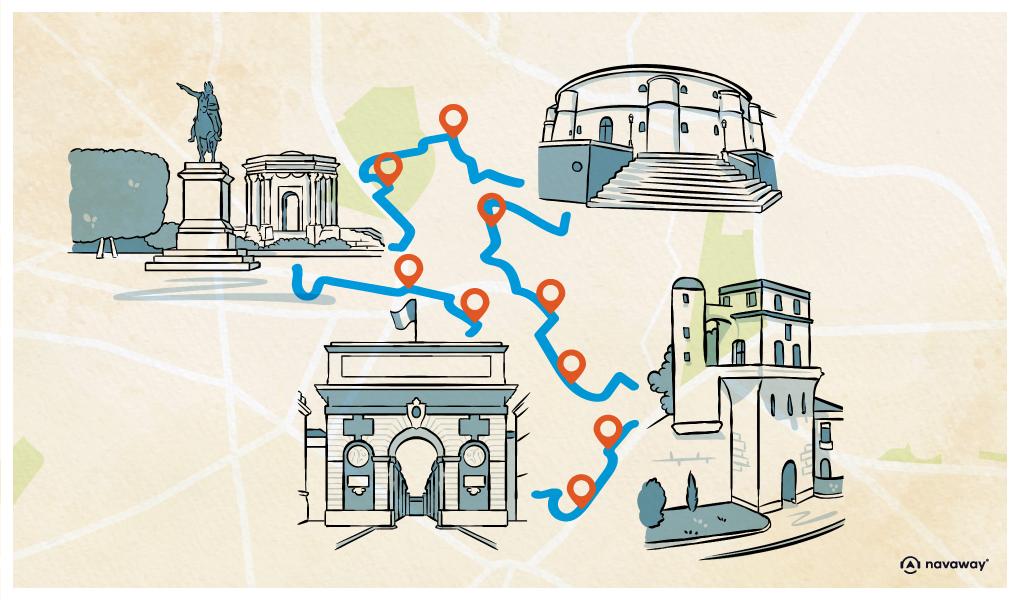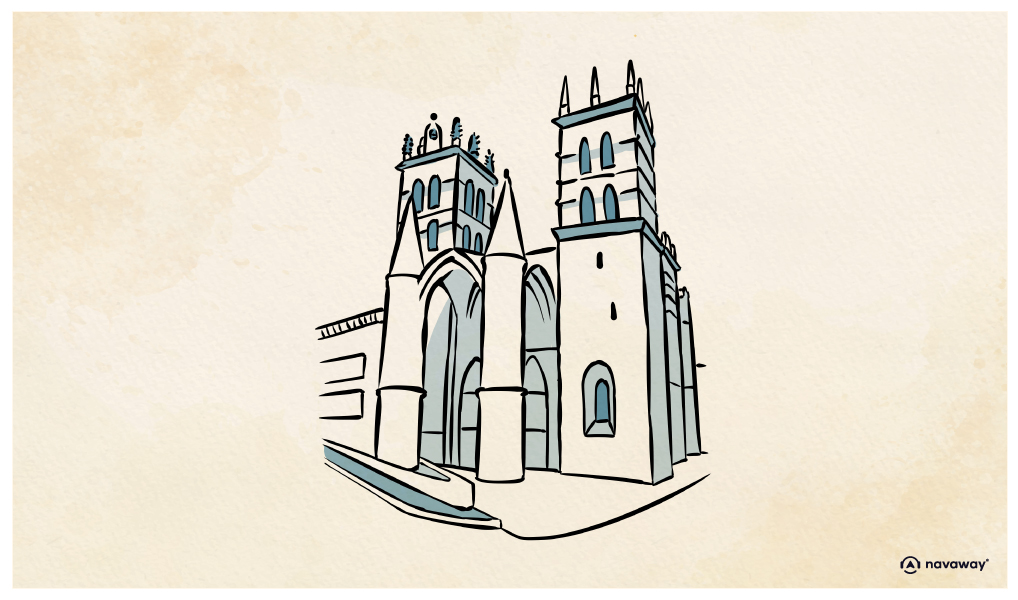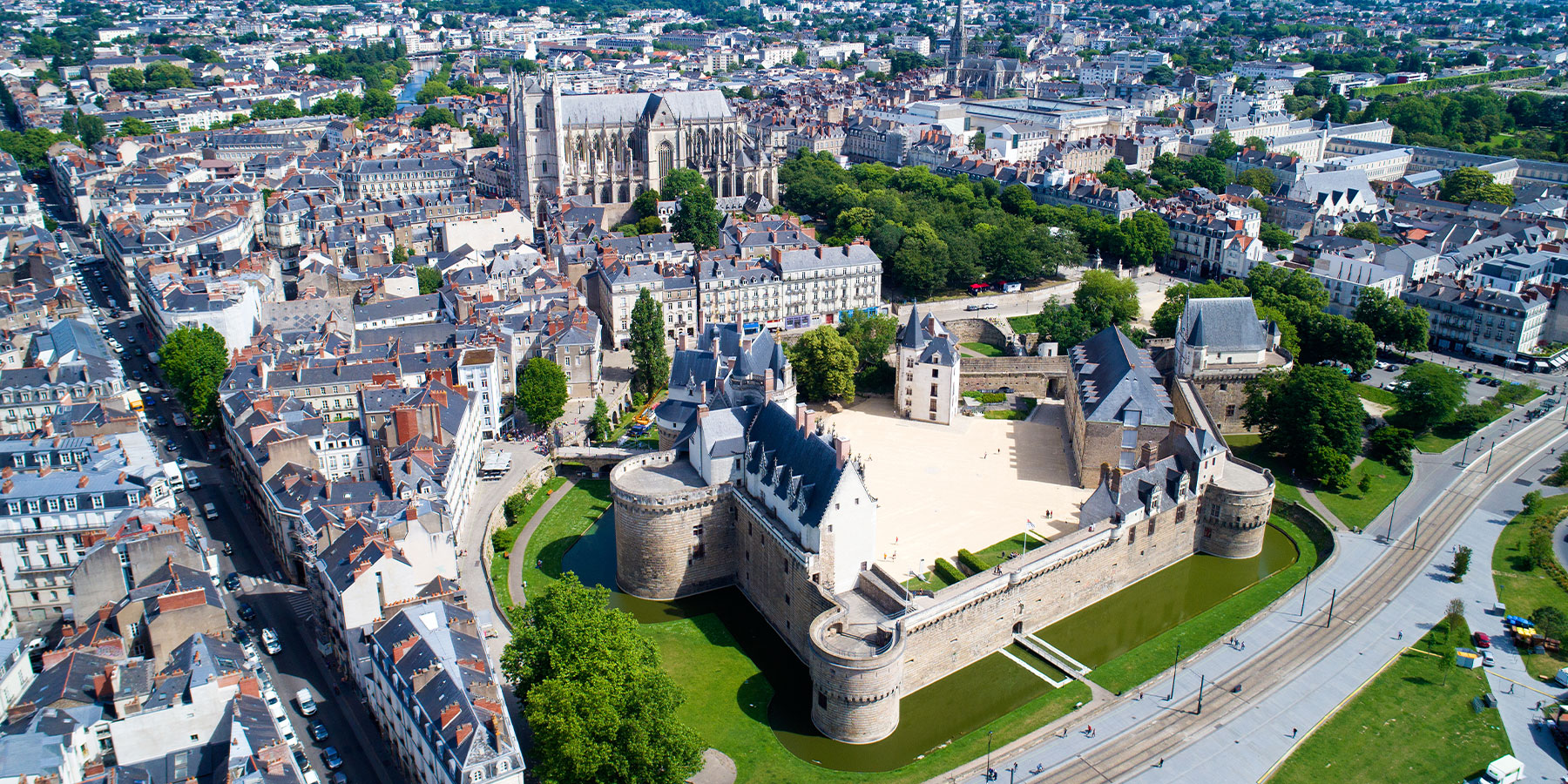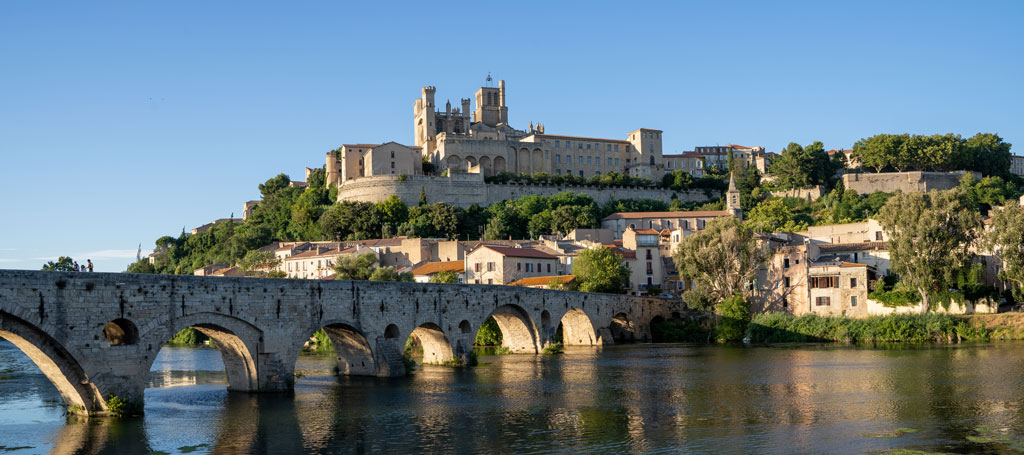
Saint Peter’s Cathedral

This point of interest is available as audio on the tour: Visit Montpellier, The Gifted City
Get ready to be amazed—this iconic landmark of Montpellier is sure to take your breath away! Saint Peter’s Cathedral towers majestually over the narrow streets of the Écusson district, offering a striking contrast to most cathedrals found in France. You might think that such prestige and austerity must surely hide remarkable history. Well, that’s putting it mildly. Pope Urban V, who studied canon law in the city, began the construction of an abbey church and a monastery-college here in 1364. Montpellier, increasingly powerful and dynamic, showed signs of relative prosperity that did not go unnoticed by the archbishopric of Maguelone. So much so that in 1536, the episcopal seat was finally transferred to the Languedoc capital. To establish the power of the Catholic Church in the heart of the city, the monastery then became the bishop’s palace, and the original abbey church was turned into a cathedral. This calculated choice would nevertheless clash with Montpellier’s rapid transformation into a Protestant stronghold in the years that followed. Thus began a period of conflict between these two branches of Christianity, commonly called the Wars of Religion. Protestant assemblies did everything to drive Catholic authorities out of Montpellier. But the latter gave no ground and retreated to their canonical establishments. To defend oneself, one must be protected. To be protected, one must have the means. The cathedral was equipped with four towers at the corners of the nave, a parapet walk, a massive porch, and several machicolations topped with battlements. Its transformation was so surprising that it was even nicknamed “Fort Saint-Pierre.” Despite this architectural armor, the religious building suffered numerous degradations, particularly in 1561 and 1567. These were also accompanied by repeated pillaging. You can still see bullet impacts around one of the windows of the left bell tower. In October 1622, after two months of siege, Montpellier officially became Catholic. Of all the medieval places of worship in the Écusson, Saint Peter’s Cathedral is the only one to have somehow survived the Wars of Religion. While King Louis XIII had it rebuilt and refurbished, it was ransacked once again during the French Revolution. It would take until the 19th century for a good restoration to remove this mutilated and disparate appearance. Additions, like the glazed tile roof of the choir, and expansions, such as the radiating chapels, were also introduced. The largest church in the former Languedoc-Roussillon region, Saint Peter’s Cathedral has been a classified historical monument since 1906. We told you you’d be amazed, but did we mention that it’s by the outside as well as the inside? Do step in to admire two remarkable treasures: the magnificent organ from 1776, featuring 5,000 pipes with only 140 visible to the eye, and the masterpiece by painter Sébastien Bourdon called ‘The Fall of Simon the Magician.’ This striking artwork brings to life a dramatic episode from Saint Peter’s story.


Discover Montpellier with app
An interactive guide through the most beautiful streets, squares, and districts
19 fun audioguides full of historical facts, anecdotes, and legends





Comments